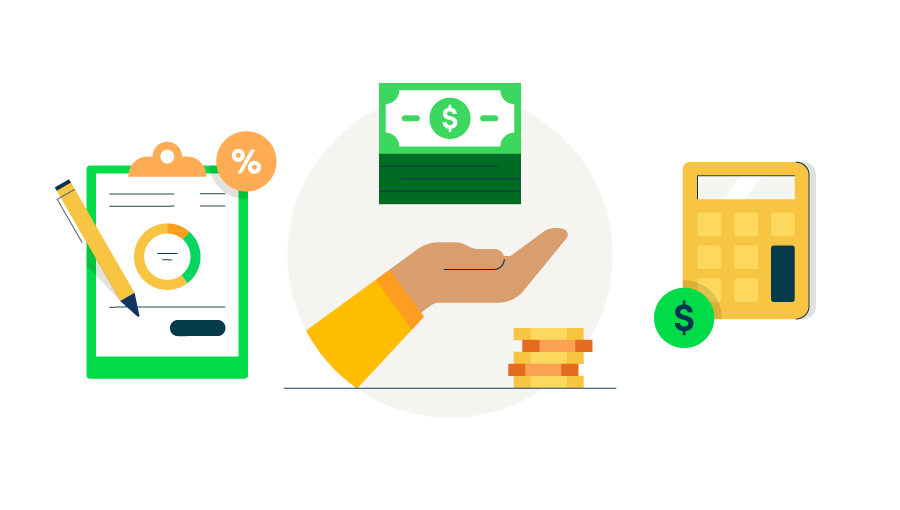How to file payroll taxes as a small business owner?
As a small business owner, you have to ensure proper filing of taxes, meeting the deadlines, and keeping track of all the updated tax-related forms and regulations.
Depending on the date of the tax deposit, you have to report federal (FICA and FUTA) and state (SUTA) taxes post-payroll to file payroll taxes.
Federal tax deposits
There are two main types of federal tax deposits a small business owner will file: FICA and FUTA.
- FUTA tax deposits: You’ll only pay FUTA taxes (unemployment taxes) on a quarterly basis to the IRS. However, if your FUTA tax contributions are less than $500, you roll them over to the next quarter and pay biannually.
If you’re in the last quarter of the year and still haven’t hit $500, use Form 940 to pay the tax by January 31.
In addition to paying the FICA and FUTA tax deposits electronically, you also need to report your taxes on Forms 941 and 940.
- Form 941 is for your quarterly federal tax return for your FICA taxes. You will fill out and submit a Form 941 for each quarter, summing all of your FICA taxes paid within those months.
- Form 940 is mainly for your yearly federal unemployment (FUTA) tax return. You will fill out and submit Form 940 annually, summing all of your FUTA tax contributions for the previous year. If your FUTA contributions haven't reached $500 by the last quarter, use Form 940 to pay the tax by January 31.
While you can also file these forms electronically, you can still mail them to the IRS.
State tax deposits
SUTA tax is state-specific and varies from state to state. Find out the state-specific SUTA tax rates and requirements by registering with the state’s unemployment agency. After registering, you will get an employer tax number. Most states will ask to file a yearly return and make quarterly payments.
For filing taxes, you have to calculate SUTA taxes based on the state’s wage base (SUTA wage base/wage limit) and the tax rate assigned to you. SUTA wage refers to the amount of your employee’s earnings that are taxable under the SUTA Act, and it is the same for all employees living within a state.
For example, in Florida, the wage base is $7000, so if an employee earns $40,000 per year, the SUTA tax will only be calculated on the first $7000 of the salary and not on the entire $40,000. In this case, the employer will pay the taxes and not the employees.
Just make sure to regularly check your state government’s official website for updates on the wage limits.
Payroll tax examples
As a small business owner, the percentage of payroll taxes you’ll have to pay will vary depending on the type of employee.
For example, a traditional employee who receives a W-2 at the end of the year is eligible for partial assistance with their FICA taxes as well as full assistance with FUTA taxes.
If the employee’s income is $25,000, both the employee and employer will each contribute 7.65% toward FICA taxes, totaling $3,825. The employer also contributes to FUTA taxes, which is 6% on the first $7,000 of income.
As for independent contractors, who don’t receive a W-2 or tax benefits from you (the employer), they are responsible for the full 15.3% of FICA taxes and receive no FUTA benefits.
Find peace of mind come tax time
Payroll taxes play a significant role in our government's program contributions by ensuring basic benefits such as Social Security, Medicare, and unemployment for all workers.
As an employer, you should keep track of the different types of taxes you owe and the potential tax penalties in case you miss a deadline. You can accomplish this using the QuickBooks tax penalty protection feature to safeguard your business from paying expensive penalties.
Before you dive in, make sure you’re categorizing your employees appropriately as traditional, statutory, or independent contractors. This way you don't underpay or overpay your payroll taxes when the time comes.
QuickBooks Online Payroll & Contractor Payments: Money movement services are provided by Intuit Payments Inc., licensed as a Money Transmitter by the New York State Department of Financial Services, subject to eligibility criteria, credit, and application approval. For more information about Intuit Payments Inc.’s money transmission licenses, please visit https://www.intuit.com/legal/licenses/payment-licenses/


















